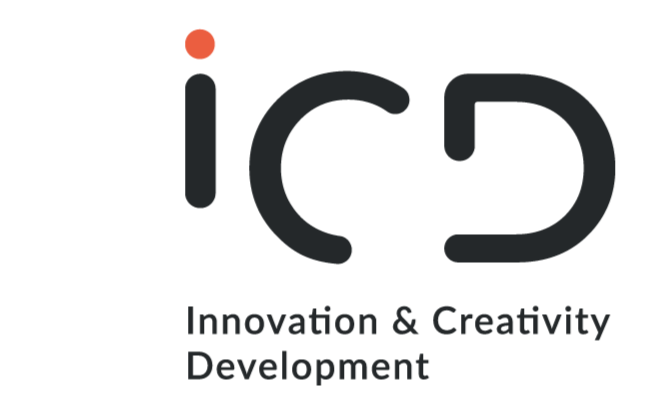
In an increasingly competitive and fast-changing environment, innovating is no longer optional: it’s become essential for growth, differentiation, and staying relevant. But what do we really mean by business innovation?
Business innovation is about introducing new ideas, processes, products, services, or business models that help a company create more value, optimize resources, and sustain strategic growth. At its core, it’s about finding different and better ways to solve problems, meet customer needs, and stay ahead of competitors.
What’s interesting is that innovation can take many forms: launching a breakthrough product, improving an internal process, creating a new business line, or designing a different customer experience. What matters most is that its impact is tangible and measurable.
Why is innovation critical for your business?
Business innovation delivers real, strategic benefits, including:
- Increasing customer satisfaction by offering solutions better tailored to their needs.
- Generating more revenue and reducing costs through new products or more efficient processes.
- Improving agility in decision-making and adapting to market changes.
- Differentiating your brand in saturated or highly competitive markets.
- Driving long-term growth and building resilience against crises or disruption.
And there’s no shortage of examples: Tesla changed the electric car market; Uber transformed urban mobility; Dyson reinvented the household vacuum… each found a unique way to create value.
The 7 major ways to innovate in a business

Not all innovation is the same, nor does it aim for the same results. Here are seven main types:
1️⃣ Product innovation: creating or improving a product or service, adding new features, increasing quality, or launching something entirely new.
2️⃣ Process innovation: optimizing production or operations to be more efficient, sustainable, or agile.
3️⃣ Business model innovation: rethinking how to generate revenue, reach customers, or structure costs.
4️⃣ Service innovation: offering new services, customizing them, or redesigning the customer experience.
5️⃣ Marketing innovation: finding new ways to communicate, position the brand, or connect with the market (e.g., social media, influencers, new formats).
6️⃣ Organizational innovation: transforming internal structures, introducing agile methodologies, encouraging cross-team collaboration, or creating creative spaces.
7️⃣ Technological innovation: applying or developing emerging technologies (AI, blockchain, IoT, augmented reality, etc.) to improve products, services, or processes.
These categories often overlap, and combining them can lead to greater impact.
How to design an innovation strategy: 9 key steps
Turning innovation into a systematic process requires method. Here’s a model you can adapt:
1️⃣ Define your goals: What do you want to achieve? Enter new markets? Cut costs? Improve customer experience?
2️⃣ Analyze your current situation: understand your strengths, weaknesses, and the competitive context.
3️⃣ Generate ideas: create channels and spaces for employees, customers, and partners to propose solutions.
4️⃣ Evaluate and prioritize: decide which ideas have the most potential, viability, and strategic fit.
5️⃣ Create a detailed plan: define resources, timelines, milestones, and risks.
6️⃣ Prototype and test: build early versions or pilot projects to validate assumptions and gather real feedback.
7️⃣ Implement and scale: bring the idea into production, monitor its progress, and adjust as needed.
8️⃣ Measure and evaluate results: using clear indicators (sales, cost savings, customer satisfaction, etc.).
9️⃣ Learn and repeat: use what you’ve learned to improve the next initiative.
The key thing to remember: innovation isn’t a linear process. It requires flexibility, iteration, and the ability to learn from mistakes.
Best practices to boost business innovation

To keep innovation from staying theoretical, it’s essential to build an environment that supports it. Here are some recommendations:
- Leverage new technologies: from AI to augmented reality, explore how they can transform processes, products, or services.
- Foster an innovative culture: encourage creativity, reward ideas, and accept that failure is part of the process.
- Put the customer at the center: gather feedback, analyze data, and design solutions based on real expectations.
- Use agile methodologies: work in short cycles, validate quickly, and adapt on the go.
- Collaborate with others: startups, universities, and research centers can bring fresh talent and perspectives.
- Take calculated risks: create an environment where experimentation is encouraged and learning is valued.
- Train and attract talent: offer opportunities for people to develop innovation skills.
- Think about sustainability and social purpose: today’s customers increasingly value brands committed to their communities and environment.
- Monitor the market: track trends and competitor moves to anticipate changes.
- Measure, celebrate, and share achievements: recognize successes and communicate results internally.
Final thought: how to make innovation part of your company’s DNA
Business innovation isn’t an isolated project or the result of rare moments of brilliance. It’s built on:
- A clear strategy aligned with your company’s vision.
- Processes that make it easier to turn ideas into reality.
- A culture that values curiosity, collaboration, and continuous learning.
- Dedicated resources and leadership that drives change.
Making innovation part of your organization’s DNA means working every day so ideas aren’t just generated — but tested, measured, and, most importantly, transformed into real impact for your business.
